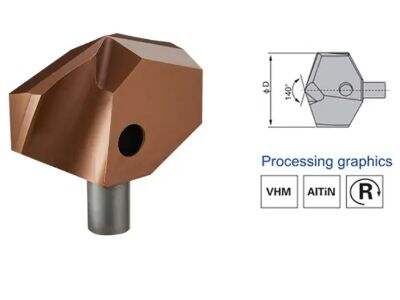Different Indexable Drill Insert Geometries Explained
Indexable Drill Inserts - Sounds like a fancy name but it’s really some simple tools that help make drilling holes easier and more efficient. You will receive a variety of inserts different geometry s shapes and sizes. Geometry: is in relation to the specific design and shape of the insert whereby it's performance and life of the component may be influenced by the said design.
Some of the common geometries are as follow :
Straight Flute Geometry: This is a straight flute which is along the length of the insert. It is commonly used for drilling general-purpose pilot holes in aluminum and plastic.
– Parabolic Flute Geometry: Parabolic flute geometry has a curved flute design, which facilitates chip evacuation, ideal for deep hole drilling or in materials that generate long chips.
Point Angle Geometry: Point angle means the angle of the insert top corner connected to the cutting edge. Various point angles are suitable for mixed materials and various drilling applications.
Considerations When Selecting the Appropriate Geometry for Your Drill Insert
Considerations when selecting the right geometry for your indexable drill inserts include:
Material: The material you're drilling will have a strong bearing on what insert geometry is best. Some geometries may be more effective in a less stiff material, and others in a stiffer material.
– Depth of Cut: The depth of the cut is how much you are drilling into the work material. Inserts with special geometries, such as parabolic flutes, are used to cut deeper cuts more effectively.
Feed Rate: The feed rate refers to how quickly the insert feeds into the workpiece. Some geometries are more suitable for withstanding increased feed rates, without suffering from significant wear or damage.
Get the Highest Performance with the Right Geometry on your Indexable Drill Inserts
The tool life and performance of your indexable Drill Inserts is determined by the geometry you choose. By getting the proper geometry, you will be able to cut much easier and get good chip evacuation, then your productivity will be higher.
How Geometry Affects Your Drill Inserts Performance and Life
The shape of your indexable Drill Inserts can play a big role in how well they perform and how long they last. Typing the wrong geometry to a given application results in excess hole wear, poor hole condition and higher tooling cost.
Tips for Choosing the Right Geometry for Your Drilling Application
So if you need a bit of help deciding which drill bit geometry is right for your applications, consider the following:
Seek advice: If you are uncertain which geometry to select, don’t hesitate to seek advice from a tooling expert. They are able to recommend an ideal geometry for your application.
Try other geometrics: You may try other geometrics to find one that better suits your application. You can use that to test and apply different geometries and discover which performs the best.
Material: While drilling, different materials need to use different drill bits to get perfect drilling effects. Don't forget to consider the material you are machining when choosing a geometry for your inserts.
Table of Contents
- Some of the common geometries are as follow :
- Considerations When Selecting the Appropriate Geometry for Your Drill Insert
- Get the Highest Performance with the Right Geometry on your Indexable Drill Inserts
- How Geometry Affects Your Drill Inserts Performance and Life
- Tips for Choosing the Right Geometry for Your Drilling Application

 EN
EN
 AR
AR
 BG
BG
 HR
HR
 CS
CS
 DA
DA
 NL
NL
 FI
FI
 FR
FR
 DE
DE
 EL
EL
 HI
HI
 IT
IT
 JA
JA
 KO
KO
 NO
NO
 PL
PL
 PT
PT
 RO
RO
 RU
RU
 ES
ES
 SV
SV
 TL
TL
 IW
IW
 ID
ID
 LT
LT
 SR
SR
 SK
SK
 UK
UK
 VI
VI
 HU
HU
 TH
TH
 TR
TR
 FA
FA
 MS
MS
 GA
GA
 AZ
AZ
 BN
BN



